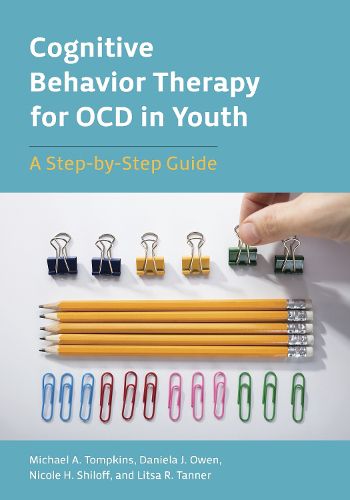Readings Newsletter
Become a Readings Member to make your shopping experience even easier.
Sign in or sign up for free!
You’re not far away from qualifying for FREE standard shipping within Australia
You’ve qualified for FREE standard shipping within Australia
The cart is loading…






Obsessive-compulsive disorder (OCD), which can cause significant impairment in personal, social, and academic contexts, affects nearly half a million children in the United States. This step-by-step guide provides mental health professionals with an adaptable, evidence-based model that uses cognitive behavior therapy to treat pediatric OCD. The authors present well-tested, empirically-validated strategies that encourage clinical flexibility and creativity. Chapters describe the nuts and bolts of assessment, case conceptualization, and treatment planning, as well as psychoeducation, pharmacotherapy, strategies for relapse prevention, and involving family members in treatment. Richly described case studies illustrate how core strategies can be effectively implemented with youth between the ages of 7 and 18.
Includes downloadable handouts for clinical use, including worksheets and fact sheets for parents and guardians, exercises and games, and other clinical tools and resources.
$9.00 standard shipping within Australia
FREE standard shipping within Australia for orders over $100.00
Express & International shipping calculated at checkout
Stock availability can be subject to change without notice. We recommend calling the shop or contacting our online team to check availability of low stock items. Please see our Shopping Online page for more details.
Obsessive-compulsive disorder (OCD), which can cause significant impairment in personal, social, and academic contexts, affects nearly half a million children in the United States. This step-by-step guide provides mental health professionals with an adaptable, evidence-based model that uses cognitive behavior therapy to treat pediatric OCD. The authors present well-tested, empirically-validated strategies that encourage clinical flexibility and creativity. Chapters describe the nuts and bolts of assessment, case conceptualization, and treatment planning, as well as psychoeducation, pharmacotherapy, strategies for relapse prevention, and involving family members in treatment. Richly described case studies illustrate how core strategies can be effectively implemented with youth between the ages of 7 and 18.
Includes downloadable handouts for clinical use, including worksheets and fact sheets for parents and guardians, exercises and games, and other clinical tools and resources.